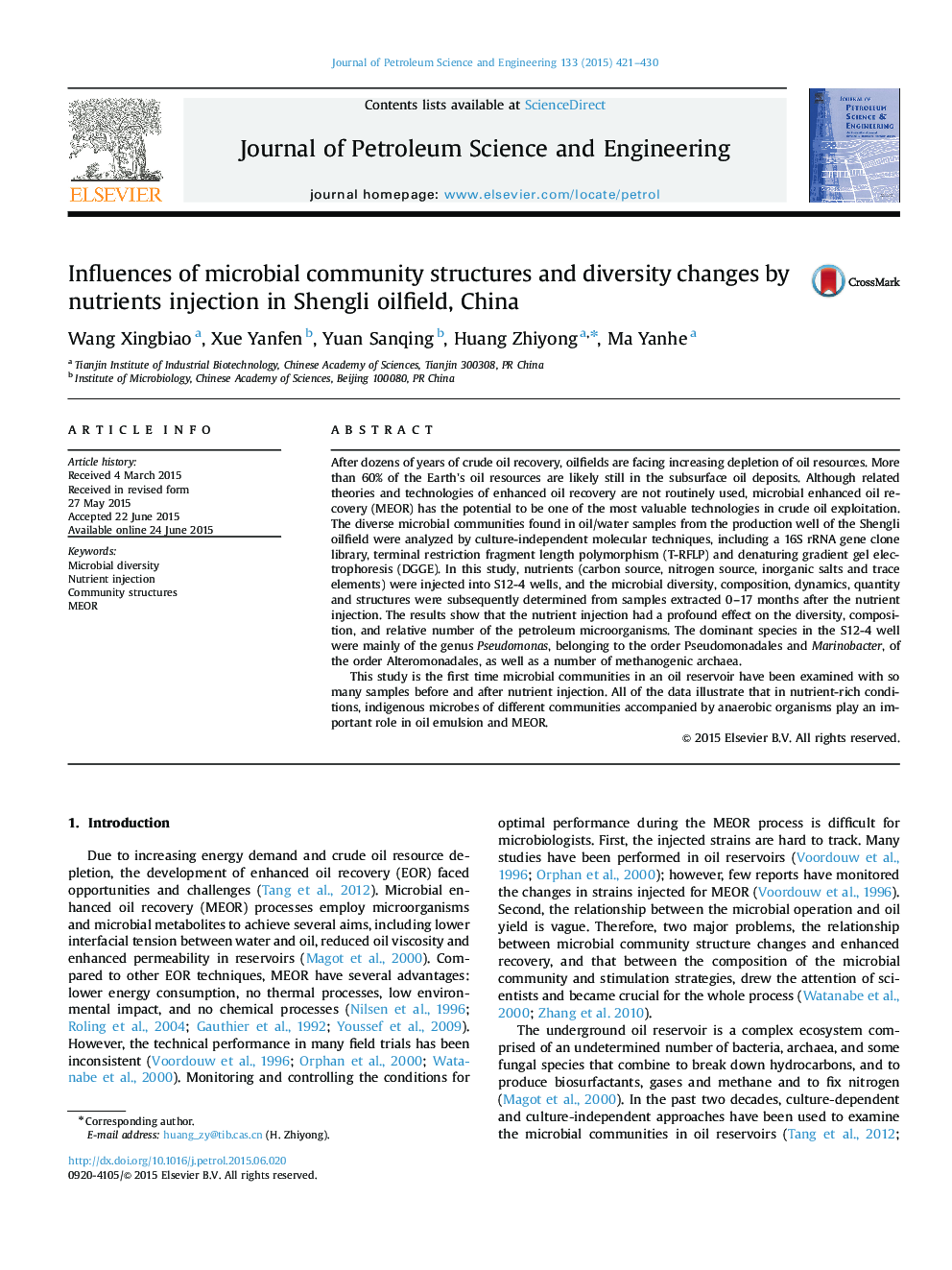| Article ID | Journal | Published Year | Pages | File Type |
|---|---|---|---|---|
| 1754734 | Journal of Petroleum Science and Engineering | 2015 | 10 Pages |
•3 kinds of methods were combined to study microbial composition of an oil well, China.•The study spent more than 20 months to investigate the microbial changes by nutrients.•A remarkable diversity existed in the subterranean oil reservoir.•The microbial communities changed enormously after nutrient injection.•Some microorganisms not existing in the oilfield appeared after nutrient injection.
After dozens of years of crude oil recovery, oilfields are facing increasing depletion of oil resources. More than 60% of the Earth's oil resources are likely still in the subsurface oil deposits. Although related theories and technologies of enhanced oil recovery are not routinely used, microbial enhanced oil recovery (MEOR) has the potential to be one of the most valuable technologies in crude oil exploitation. The diverse microbial communities found in oil/water samples from the production well of the Shengli oilfield were analyzed by culture-independent molecular techniques, including a 16S rRNA gene clone library, terminal restriction fragment length polymorphism (T-RFLP) and denaturing gradient gel electrophoresis (DGGE). In this study, nutrients (carbon source, nitrogen source, inorganic salts and trace elements) were injected into S12-4 wells, and the microbial diversity, composition, dynamics, quantity and structures were subsequently determined from samples extracted 0–17 months after the nutrient injection. The results show that the nutrient injection had a profound effect on the diversity, composition, and relative number of the petroleum microorganisms. The dominant species in the S12-4 well were mainly of the genus Pseudomonas, belonging to the order Pseudomonadales and Marinobacter, of the order Alteromonadales, as well as a number of methanogenic archaea.This study is the first time microbial communities in an oil reservoir have been examined with so many samples before and after nutrient injection. All of the data illustrate that in nutrient-rich conditions, indigenous microbes of different communities accompanied by anaerobic organisms play an important role in oil emulsion and MEOR.
